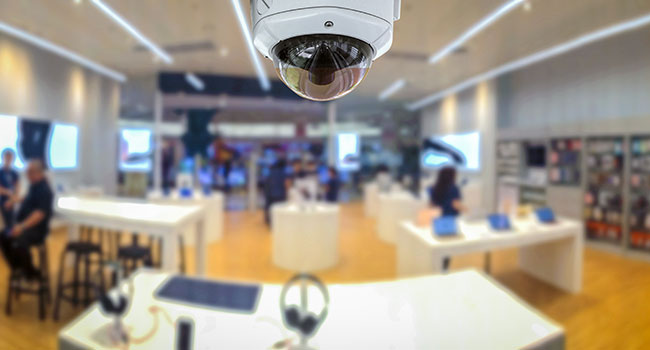
5 Myths About Business Alarm Systems
The truth about commercial monitoring services
- By Jake Stauch
- Jul 20, 2023
Two considerations come to mind when we talk about business alarm systems: complexity and scalability.
First, it takes a layered interplay of different systems to ensure the utmost coverage across multiple business units, locations and specific security needs. Subsequently, as an enterprise adds and subtracts employees, or expands to new locations, poor scalability can steadily inflate an alarm system’s total cost of ownership.
It is a lot to account for. And though the right business alarm system can help enterprises overcome these challenges, they persist. Their persistence has given way to five pervasive myths that require some expert attention.
Myth #1. You Need a Lot of Extra Hardware to Get Started with a Business Alarm System
Most experts agree that it takes more than security cameras to keep enterprises safe. For tight, around-the-clock coverage, enterprises require the addition of professional monitoring services, if not the integration of additional security measures, such as alarms, access control.
While there are cases, setting up this form of enterprise alarm system requires a lot of extra hardware, that doesn’t have to be the case. Modern alarm systems provide fully integrated 24/7 professional monitoring with emergency dispatch services using existing security devices—with no additional hardware needed.
Myth #2. Business Alarm Monitoring Requires Complex Configurations, Costly Servicing Fees
Traditionally, configuring alarm settings for enterprises has been costly and complicated. At least that is the perception across the industry. The truth is, there are cloud-based plug-and-play solutions that require a lot less configuration, and do not go offline very often, if at all, requiring far less service and care.
For example, modern alarm systems allow customers to fully customize their alarm settings, including the ability to:
Create or transition existing sites and subsites to become alarm sites.
Configure and set alarm triggers with different arm schedules, video verification, and notification lists ad hoc.
Without creating too much additional effort or cost, this customizability ensures that enterprises have the most accurate threat response as the needs of the organization change.
Myth #3. Onsite Security Guards are Enough
When you think of security guards, the ATM at a local branch of a national bank might come to mind. Out front where customers come to withdraw cash, you’ll usually find a security guard close by. Though that security guard is trained to intervene in case of an active incident, their real purpose is to serve as a deterrent.
Across multi-site enterprises, security guards alone can’t possibly provide the level of deterrence and protection needed to minimize incidents. Savvy wrongdoers will time and avoid intermittent patrols. Security guards cannot be everywhere at once, leaving gaps for intrusions, theft and property damage to occur.
Should business replace security guards completely? Not necessarily. But they should consider additional layers of security, such as cameras with motion alerts and a professional monitoring service. That way the enterprise can respond to detected threats in real-time, even if a security guard isn’t physically present.
Myth #4. Intrusions Only Happen at Night
Many enterprises make the mistake of assuming that crimes primarily take place after hours, under the cover of dark. The reality is that a significant amount of crime happens during operating hours—especially employee theft.
Customers often come to this realization after week-long streaks of break-ins and thefts. After implementing modern enterprise alarm systems, including video security and AI-powered analytics, customers make some valuable discoveries. They can now track down responsible parties and people committing crimes in broad daylight, all while dismissing a feline intruder as a false alarm.
Myth #5. Business Alarms are Enough
More than half of retailers allocate additional technology resources and capital specifically toward retail loss prevention. Alarms remain a key component in this fight, as does motion detection with integrated cameras and professional monitoring.
Yet these suites of top-line security technologies only go so far. The truth is that enterprise teams also need to train awareness and conscientiousness among staff members in three key areas.
- Educate on the ways internal employees and external visitors shoplift and commit theft/fraud.
- Teach how to detect intruders with a mask or verify a crime-in-progress for police.
- Train employees to monitor the store when they are offsite, or to secure the store when they realize they have forgotten to lock up.
Where Businesses Go from Here
While the road to finding the most effective business alarm system might seem steep, it helps to know the truth of these five common myths.
- You do not always need to expend a lot of capital on extra hardware.
- You can minimize configuration and service fees.
- Security guards have a role, but they need help.
- Theft and other crimes can happen anytime.
- Alarms are but one vital component of an enterprise security system.
In most cases, dispelling these five myths about business alarm systems goes a long way toward finding a complexity-proof and scalable solution.